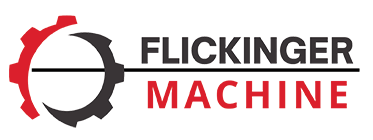Hydraulic Equipment Maintenance and Repairs for the Aerospace Industry
Hydraulic equipment is responsible for pulling, lifting and bolting aerospace craft and components. These are heavy-duty applications that rely on the following hydraulic technologies to function:
- Hydraulic pumps
- Hydraulic cylinders and actuators
- Hydraulic bolting tools, like torque wrenches
Hydraulic equipment is constantly cycled during operations and therefore requires consistent maintenance to optimally function. As such, it is important to establish a maintenance schedule for your hydraulic equipment assets.
The Value of a Consistent Maintenance Schedule for Hydraulic
Some aerospace companies track equipment maintenance using specialized software and others use paper. In both cases, the important point is that maintenance is tracked. Consult with the equipment’s operating manual to verify recommended service intervals, and following any maintenance on the equipment, use your hydraulic maintenance tracking system to record the following information:
- The services performed on the hydraulic equipment
- Any component replacements
- Notes on any issues or emerging concerns with the equipment
A hydraulic equipment maintenance expert can help aerospace companies develop a maintenance tracking system and get their hydraulic assets on a beneficial service schedule.
Hydraulic Pump Maintenance for Aerospace Companies
Hydraulic pumps are used to drive jacks, cylinders, actuators and positioning systems – important tools for aerospace construction and handling. To ensure your hydraulic pumps continue delivering value for your company, the following maintenance routines are recommended:
- Keep the hydraulic pump clean – Contamination is the greatest threat to your hydraulic pumps and is responsible for most hydraulic system failures. A simple way to protect against many contaminants is to clean the hydraulic pump thoroughly and often.
When cleaning a hydraulic pump, wipe down the pump’s drive shaft, body and connections. It is generally recommended that hydraulic fluid should be changed out every 2,000-3,000 operating hours. To perform this maintenance, drain the old fluid and wipe down all interior surfaces in the pump’s reservoir with a lint-free cloth. Give the suction strainer a close look and clear it out as well. A mild solvent can be used to break up and remove any remaining deposits in the reservoir. - Monitor hydraulic fluid quality – When contamination intrudes into a hydraulic system, it often shows up in the hydraulic fluid first. The sooner contamination is detected, the sooner your organization can take measures to mitigate its effects. Early detection relies on regular hydraulic fluid sampling and analysis.
When sampling hydraulic fluid, collect it from a test point located near the hydraulic pump. This will help determine whether contaminants are circulating through the hydraulic pump’s reservoir.
A simple visual inspection is often enough to confirm whether contaminants are present. A milky or cloudy appearance is what you are looking for. About once a quarter, send a fluid sample to a lab for analysis to detect any invisible contamination. - Listen and look for issues – If your hydraulic pump is developing issues, your operators will likely hear or see them first. Troubling signs include unusual sounds (banging, whining, etc.), rough equipment handling, inconsistent power delivery, overheating, or the presence of hydraulic fluid on or around the hydraulic pump.
Hydraulic Cylinder Maintenance for the Aerospace Industry
Hydraulic cylinders provide lifting or pushing power needed in some aerospace applications, and it is a strenuous job for hydraulic equipment. To ensure your cylinders continue delivering power without incident, the following maintenance routines are necessary:
- Checking and replacing any failing seals – The hydraulic cylinder seals are the most likely failure points when a cylinder develops issues. When it is time to crack open the hydraulic cylinder for a close inspection, be sure to include the wiper, rod and piston seals in that inspection. If any of these parts appear worn or otherwise damaged, replace them.
- Inspecting, cleaning and lubricating the piston rod – The hydraulic cylinder piston rod may develop signs of wear, corrosion or damage prior to a major failure. Detecting signs of wear or damage early can prevent or delay those failures from occurring.
When cracking open the hydraulic cylinder for inspection, check for any signs of corrosion or wear on the rod. Extensive corrosion or wear necessitates rod replacement, as does pitting or scoring on the piston. This may indicate uneven wear and improper rod alignment.
Following an inspection and cleaning, it is important to apply fresh lubricant to the rod.
In addition to the above, give your hydraulic cylinders a quick look over following operation. If any hydraulic fluid leaks are present, fluid may first accumulate on the cylinder’s body.
Hydraulic Bolting Tool Maintenance for Aerospace Applications
Hydraulic bolting tools such as torque wrenches are responsible for securing heavy-duty fasteners to aerospace craft. It is a job that demands precision and safe operation. The following maintenance routines will ensure that safety and precision:
- Clean the torque wrench’s body and important components – Use a cloth and mild solvent to remove any contaminants from the wrench’s body, housing guard, drive shaft, button assembly, drive shoe, compression springs and ratchet lever pin. You will need to open up the torque wrench to do so, but this step will prevent contaminants from ingression into the system, in many cases.
- Lubricate all bearing surfaces – Hydraulic torque wrenches require consistent lubricating to maintain efficient operation. After cleaning the torque wrench, lubricate the side plates, drive shoe, button assembly, square drive and ratchet lever.
- Tighten retaining hardware – The hardware that connects the wrench body and swivel head together is stressed with every cycle. Ensure each screw is sufficiently tightened prior to operation.
A Hydraulic Equipment Technician Can Help Aerospace Companies Protect Their Valuable Assets
Aerospace manufacturers keep their operations going with the help of hydraulic technology. To keep your hydraulic technology operating at peak capacity, consider bringing in help from a hydraulic equipment expert. A reputable hydraulic equipment technician will provide on-time preventative maintenance, responsive repairs, expanded component access and expert-level insight for your organization’s hydraulic power needs.
